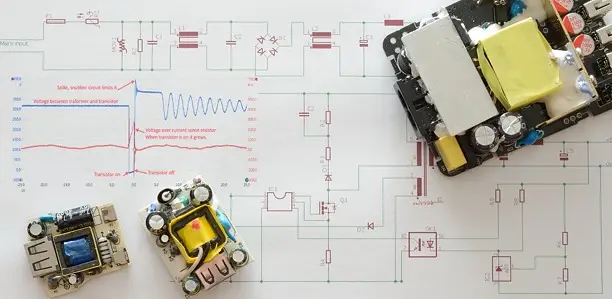How does a USB charger work?


A USB charger is a common device used to charge various electrical devices such as smartphones, tablets, and other portable devices. It is a convenient and efficient way to provide power to these devices, allowing users to charge them quickly and easily. But have you ever wondered how a USB charger actually works? In this article, we will explore the inner workings of a USB charger and understand the charging mechanism behind it.
Understanding the Basics of a USB Charger
A USB charger is a charging device that connects to an electrical outlet and provides power to an electrical device through a USB cable. It consists of two main components: the power supply and the charging mechanism.
The Power Supply
The power supply is the part of the USB charger that converts the AC (alternating current) power from the electrical outlet into DC (direct current) power that can be used by the electrical device. This conversion is necessary because most electronic devices operate on DC power.
The power supply typically consists of a transformer, rectifier, and voltage regulator. The transformer steps down the voltage from the electrical outlet to a lower voltage suitable for the charging mechanism. The rectifier converts the AC power into DC power, and the voltage regulator ensures that the output voltage remains stable and within the required range.
The Charging Mechanism
The charging mechanism is responsible for regulating the flow of power from the power supply to the electrical device being charged. It ensures that the device receives the appropriate amount of power to charge efficiently and safely.
The charging mechanism consists of several components, including resistors, capacitors, and integrated circuits (ICs). These components work together to control the charging process and protect the device from overcharging or overheating.
How Does a USB Charger Work?
Now that we have a basic understanding of the components of a USB charger, let’s dive deeper into how it actually works.
1. When you plug a USB charger into an electrical outlet, the power supply converts the AC power from the outlet into DC power.
2. The DC power is then passed through the charging mechanism, which regulates the flow of power to the electrical device being charged.
3. The charging mechanism communicates with the electrical device to determine its charging requirements. This communication is done through the data pins in the USB cable.
4. Once the charging mechanism has determined the device’s charging requirements, it adjusts the flow of power accordingly. It may increase or decrease the voltage and current to match the device’s needs.
5. The charging mechanism also monitors the charging process to ensure that the device is charging properly. It checks the battery level, temperature, and other parameters to prevent overcharging or overheating.
6. Once the device is fully charged, the charging mechanism stops the flow of power to prevent overcharging. Some USB chargers also have a trickle charging feature that maintains the battery level at a certain percentage to prolong its lifespan.
Benefits of Using a USB Charger
Using a USB charger offers several benefits compared to other charging methods. Here are some of the advantages:
– Convenience: USB chargers are compact and portable, making them easy to carry around and use wherever you go.
– Compatibility: USB chargers are compatible with a wide range of devices, including smartphones, tablets, cameras, and more. This versatility makes them a convenient choice for charging multiple devices.
– Efficiency: USB chargers are designed to provide fast and efficient charging. They deliver the right amount of power to the device, ensuring quick charging times.
– Safety: USB chargers have built-in safety features to protect the device from overcharging, overheating, and short circuits. This ensures the safety of both the device and the user.
In Conclusion
A USB charger is a vital component in our daily lives, allowing us to charge our electronic devices quickly and conveniently. Understanding how a USB charger works can help us make informed decisions when choosing a charger and ensure the safe and efficient charging of our devices. So the next time you plug in your USB charger, you’ll have a better understanding of the technology behind it.
Recent Posts
How do I create an engaging and informative online quiz or assessment?
Creating an engaging and informative online quiz or assessment can be a powerful tool for… Read More
What are the most effective methods for managing and reducing work-related stress in the hospitality industry?
Work-related stress is a common issue in the hospitality industry, where employees often face long… Read More
How can I improve my assertiveness and communication skills in a leadership position?
In a leadership position, assertiveness and effective communication skills are crucial for success. Being able… Read More
What are the key elements of a successful employee recognition and rewards program?
Employee recognition and rewards programs play a crucial role in motivating and engaging employees, as… Read More
How do I effectively manage and respond to customer feedback and reviews?
Customer feedback and online reviews play a crucial role in shaping a company's reputation and… Read More
What are the best strategies for effective time management as a stay-at-home parent?
Effective time management is crucial for stay-at-home parents who juggle multiple responsibilities on a daily… Read More